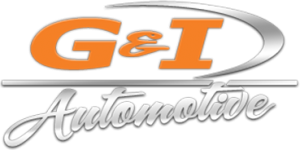Engines 101: Getting to Know Your Kanata Car Engine
Unless you are a car person, the most mysterious part of your Kanata/Stittsville car is the engine. It is what we look at with confusing when we check our oil or add wiper fluid. And if we hear a weird noise from it, there is almost zero chance we can diagnose what is going on. So first of all, if that is the case now, get your car into a Kanata garage as soon as possible.
 But is all seems right in your engine world, let’s take a few minutes to examine the main components of your Kanata/Stittsville car engine.
But is all seems right in your engine world, let’s take a few minutes to examine the main components of your Kanata/Stittsville car engine.
Engine Cylinder
The cylinder in your Kanata car engine is simply a tube that encases all of the engine’s “action.” Older, more powerful (and gas hog) cars had 8 cylinders. Today’s most cars have either 4 or 6 cylinder engines.
 Piston
Piston
Within your Kanata/Stittsville engine cylinders are pistons, which help power the engine by going up and down. By their nature automotive pistons have to be durable as while they go up and down, they are encountering thousands of small explosions every time you drive your Kanata/Stittsville car or truck. The top of your Stittsville engine pistons are typically smooth, sometimes with little indentations in the surface so the piston won’t hit one of the valves. This is where the explosions happen.
As the piston goes up into the its respective cylinder, the fuel air mixture that is sealed within it gets compressed while your spark plug makes the explosion, which is contained inside the engine and forces the piston back down quickly and powerfully. From there the connecting rod pushes against part of the crankshaft to keep the engine turning.
 Connecting Rod
Connecting Rod
Looking at the picture on the right and above (the piston) you can see how the connecting rod connects to the bottom of the piston. Connecting them is a thick steel pin, allowing the connecting rod to pivot back and forth. As the connecting rods cause the crankshaft to rotate, the point at which they are attached to the crankshaft shift slightly in relation to the center of the piston. This means it needs to wobble back and forth just a tad so that it doesn’t break off the first time you turn the key. The wrist pins are extremely strong and almost never break.
 Engine Crankshaft
Engine Crankshaft
As we explained, the explosions inside each cylinder pushes them to the inside of the engine. Then the connecting rod connects the bottom of the piston to your engine’s crankshaft. It is at this point that the energy to make your Kanata car go creates combustion to rotate the crankshaft.
As each piston within each cylinder has its own connecting rod, each rod is connected to the crankshaft at a different point at different points in the crankshaft’s rotation. This causes a different part of the crankshaft being pushed along in the rotation thousands of times a minute, getting your car moving.
All of this action requires lubrication – which is where the oil change comes in. If you are heaving any difficulty with your engine or if you simply want to make sure all this “action” has a fresh oil change, stop by G&I’s Stittsville/Kanata garage.
Leave a Reply
